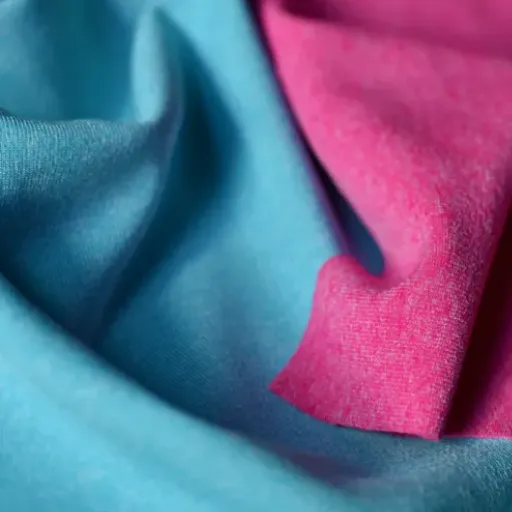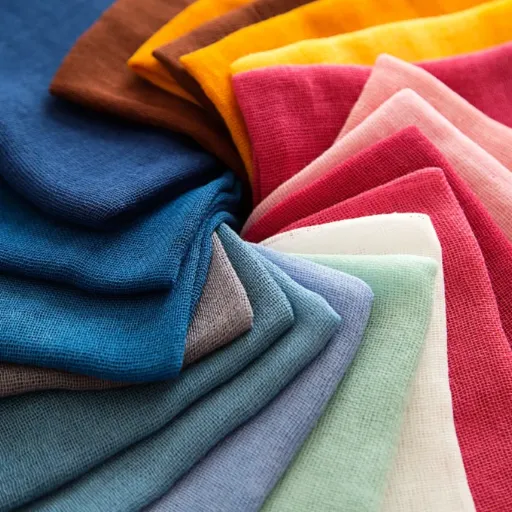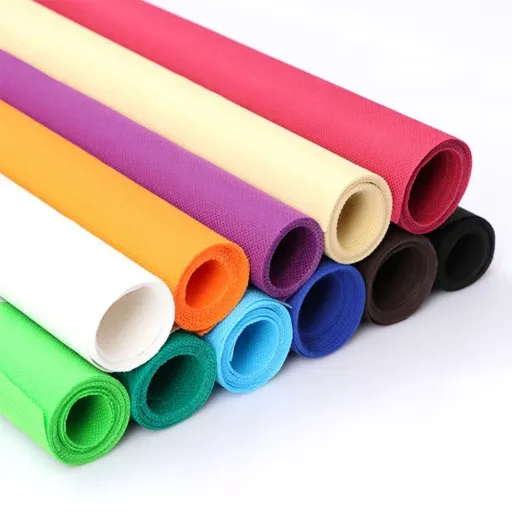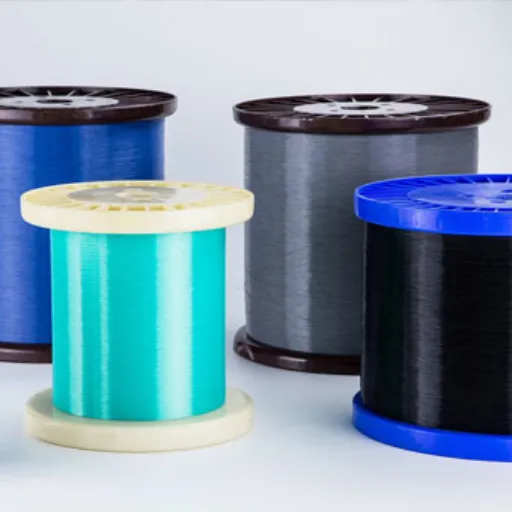Synthetic monofilament yarn is used for numerous applications from textiles to fishing, agriculture to medical domains. Getting the right supplier for this very versatile product becomes a great factor between excellent performance and finishing below expectations. This guide is aimed at helping business units and manufacturers to better navigate the complexities of the synthetic monofilament yarn markets to make an informed choice. If one is looking for information on materials, suppliers, trends, etc., then this article will become their one-stop resource. Stay with me and dive into some factors, tips, and strategies needed to choose an ideal filament supplier that will cater to specific needs.
Understanding Synthetic Monofilament Yarn
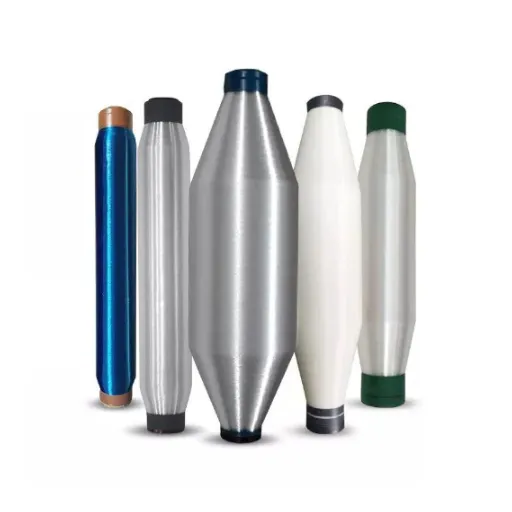
Definition and Characteristics
Synthetic monofilaments consist of single filaments extruded from materials like nylon, polyester, or polypropylene. These yarns generally have a uniform diameter and structure to ensure durability and strength for production and other uses. Because of their synthetic nature, these fibers do not absorb moisture and resist UV exposure; thus, they harbor high general utility.
The composition of synthetic monofilament yarn includes polymers formed from chemical processes. Such polymers are melted and extruded through spinnerets to form continuous filaments. There can be certain additives included in the making of these substances to create some properties such as flexibility, elasticity, or abrasion resistance. Such yarns can be made to exact use-demand requirements for textile, fishing, or medical instruments.
Some advantages of synthetic monofilament yarn include its very lightweight nature, the very high tensile strength, and the adaptability to different conditions. Due to their complicated formation, they are also lower in price than the synthetic counterparts, which means they have longer usage. Modern industries make use of synthetic monofilament yarn on the basis of performance, dependability, and save time.
Types of Synthetic Monofilament
Synthetic monofilament yarn is classified according to its material composition and intermediate applications. The commonly used types include Nylon, Polyester, and Polypropylene, each exhibiting different physical and chemical properties suited to particular industrial demands.
Nylon Monofilament
Being flexible, tough, and resisting abrasion, nylon monofilament finds its use in fisheries lines, industrial brushes, and medical sutures. It withstands high stress and works even in high-moisture conditions.
Polyester Monofilament
Polyester monofilaments are prized for their high strength, UV resistance, and superior dimensional stability. These are used for conveyor belts, screen-printing, and other specifications of industrial fabric requiring strength and stability.
Polypropylene Monofilament
This is lightweight and highly resistant to chemical attack while the insulation properties are sufficiently good. The water filtration, geotextile, and packaging industries find wide applications for these in virtue of cheapness and consistent performance.
Each type of synthetic monofilament plays an extremely important role in industries by offering distinct properties and benefits to suit different functional requirements.
Synthetic Monofilament Yarns: Applications and Benefits
Synthetic monofilament yarn offers myriad applications in different industries due to their versatility and uniqueness. The yarns find utility in agriculture, medical textiles, filtration, and construction. They stand and survive under harsh conditions arising from exposure to chemicals, heat, and moisture, thus making them ideal for settings that call for durability and reliability.
Among the advantages of synthetic monofilament yarns is their provision of strength while still allowing for the materials to remain lightweight. In agriculture, they are used in nets and meshes to protect crops against humidity due to exposure to sunlight and adverse weather conditions. In certain medical applications, the yarns are transformed into sutures and meshes to ensure their biocompatibility and precision of performance.
Another important use is in filtration and geotextiles as they resist abrasive conditions that would ensure consistency over time. Being environment-friendly adaptable, some forms of monofilament yarns are recyclable, thus addressing the rapidly emerging need of sustainable industrial practices. These properties make them indispensable to modern industries.
Key Properties of Monofilament Yarn
- 1
Excellent Strength and Durability: Suitable for harsh industrial applications with resistance to wearing out and maximum longevity in abrasive conditions.
- 2
Flexibility and Adaptability: Can be designed for any thickness and mechanical property while retaining flexibility for demanding applications.
- 3
Environmental Sustainability: Highly recyclable properties address increasing emphasis on sustainable practices in various industries.
Manufacturing Processes of Monofilament Yarn
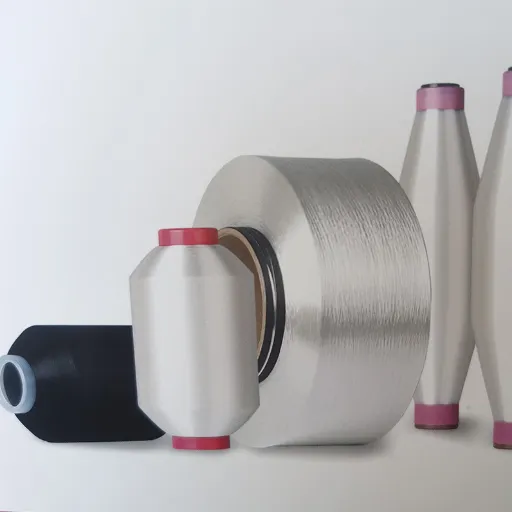
Overview of Filament Production
First of all, monofilament yarn production would begin with the choice of raw materials suitable for this purpose-Really, thermoplastic polymers like nylon, polyester, or polypropylene are considered-their ordinary characteristics being durability, adaptability, and resistance to atmospheric conditions. The raw material is melted into viscous-liquid form ready for extrusion.
Polymer melt stocks are forced through the spinnerette-having holes-that shape the emerging filaments; these holes also dispose of their diameter or some special formation as given to monofilament. As soon as they come out of the spinnerette, the filaments are washed by a cooling acceleration in order to let them solidify or crystallize. Keeping them cool down for some given time really increments their desired features like strength and elasticity.
The yarn is drawn and heat-set-were the last processing-from the big drawing processes in order to increase its tensile strength and stability. The drawing stretches filaments to align their molecules, thus providing better strength, whereas heat setting ensures that the yarn has dimensional stability and set silk forms. The resultant yarn gives rise to a very versatile material that is used for a variety of industrial and commercial applications.
Polyester vs. Nylon Monofilament Production
| Aspect | Polyester Monofilament | Nylon Monofilament |
|---|---|---|
| Tensile Strength | Higher tensile strength | Good strength with better elasticity |
| UV Resistance | Superior UV resistance | Moderate UV resistance |
| Moisture Absorption | Low moisture absorption | Higher moisture absorption |
| Applications | Outdoor equipment, fishing nets | Sewing threads, flexible cords |
| Chemical Resistance | Better chemical and moisture resistance | Good abrasion resistance |
Polyester and nylon monofilament methods of production hold some common features yet differ in many respects. The physical properties of the polymers being different put different sets of options before the process technologists. In both extrusion method of monofilament creation, polymer resins flow through spinnerets to prepare continuous filaments, while cooling stretches are the finishing processing methods for imparting strength and flexibility to product. The molecular structure of the polymer used, processing conditions, and type of heat treatments greatly influence the characteristics of the products.
Quality Control Measures in Manufacturing
Essential Quality Control Steps
- Raw Material Selection: Careful selection and testing of polymers for purity and consistency before production
- Extrusion Process Monitoring: Tight control of heat and pressure parameters with frequent inspections
- Post-Production Testing: Testing for tensile strength, elongation, chemical resistance, and environmental stability
Quality control in manufacturing synthetic monofilament yarn ensures that products are consistent in terms of quality, durability, and performance. One of the primary measures involves the selection of raw material. Raw materials must be chosen very carefully to prevent defects in the final product. For this, high-quality polymers like polyester or nylon should be selected, depending on the end application. Testing would be done on raw materials for purity and consistency before production starts.
Monitoring the extrusion process is another essential quality control measure. Extrusion is considered to be a process of extrusion wherein high heat and pressure must be applied to maintain uniformity in fiber thickness. Any variation in these parameters or even minor lapse of attention toward any step can lead to fiber out of specifications, resulting in its rejection. Modern-day extrusion machines are equipped for very tight control on these parameters, with frequent inspections by technicians to ensure the fiber always conforms to specifications. Wherever a slight deviation is detected, in texture, in tensile strength, or in diameter, immediate corrective action is taken or the fiber is scrapped rather than permitted to deviate even to marginally, which increases wastage and cost.
Testing after production is another important consideration. The synthetic monofilament yarn undergoes testing for tensile strength, elongation, chemical resists, and environmental stability. Yarns are tested after production under real working conditions to assure reliability and performance. Implemented every step of the way, the before-presented quality control methods assure that the end product complies with specification and serves the consumer well.
Applications of Synthetic Monofilament Yarn
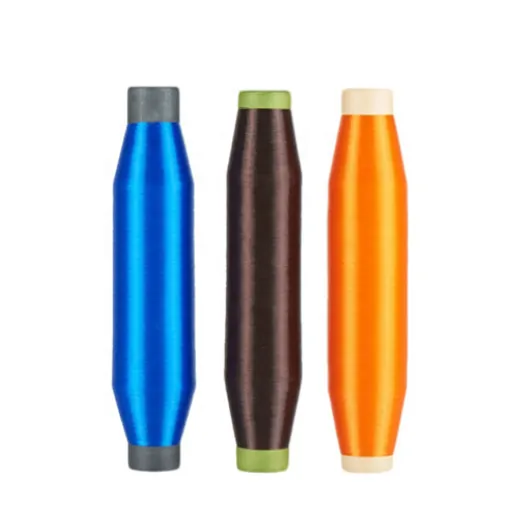
Textile Industry Application
Synthetic monofilament yarns are employed by the textile industry for their strength, utility, and meeting of specialized requirements. Foremost uses include fabrics for sportswear, upholstery, and industrial textiles. Due to the severe tensile load and occasional abrasions imparted on these yarns, their durability provides special advantage.
One foremost quality it has to give in the textile industry is the inimitability of synthetic monofilament yarn. It can be modified with certain properties like water resistance, stretchability, or thermal properties. These give them applications in the making of technical fabrics for outdoor wear or performance wear. Other than their applications, it helps in making the textiles lighter and greater in comfort.
In addition to its technical textile uses, these are not seen as apparel applications. They include things such as filtration fabrics, conveyor belts, and protective clothing. Synthetic monofilament yarns are maintained due to constant quality and customizable nature, and synthetic monofilament yarns meet the textile industry’s demands, both consumer and industrial.
Industrial Applications of Monofilament
🔧 Filtration Systems
Used in filter fabrics for water treatment, chemical processing, and food industries due to uniformity and strength.
🏭 Conveyor Belts
High tensile strength belts for agriculture, logistics, and manufacturing with continuous operation capability.
🛡️ Protective Clothing
Lightweight, durable materials for firefighting, construction, and industrial protection gear.
Being resistant to wear and having durability and adaptability to multiple industrial applications, monofilament yarn has wide applications across industries. A significant application is filtration, wherein these yarns are converted into filter fabrics. The uniformity and strength of these yarns allow them to filter liquids, gases, and fine particles in water treatment, chemical, and food processing industries.
In the next important application, monofilament yarns are used in conveyor belt manufacturing. They yield belts with high tensile strength, capable of resisting heavy loads and continuous operation. These conveyor belts are widely used in agriculture, logistics, and manufacturing industries, where reliable and strong material handling systems are required.
Another application is protective clothing. Being light and durable, they are used in clothing meant to protect workers from hazards of the environment, such as heat, chemicals, and abrasion. This use is highly crucial in the field of firefighting, construction, and industrial manufacture to keep the workers safe while allowing some movement and comfort. Monofilaments are widely versatile, trustworthy, and handy in any industrial field.
Innovative uses in various sectors
Outside of the hypothetical applications, monofilaments are used in agriculture, medicine, and 3D printing. In agriculture, they are used to manufacture netting and greenhouse films. In order to increase crop production, these materials protect the plants against bad weather and pests. Lightweight and durable, they provide a solution to the problems faced by modern-day farmers.
These also provide great benefits to the turf of medical sciences. Surgical sutures made of monofilaments increase precision, decrease tissue reactivity, and allow for faster healing in patients. Moreover, monofilaments are crucial in manufacturing other medical devices such as catheters and diagnostic tools, which through their flexibility and biocompatibility improve patient care.
In another up-and-coming area of use, 3D printing employs various monofilaments as raw materials for making intricate and customized designs for industries ranging from automotive to aerospace manufacture. This innovation also minimizes waste of materials while allowing complex structures to be created very quickly. The plethoric use cases stand to testify to how monofilaments can change the landscape of multiple engine fields.
Properties of Synthetic Monofilament
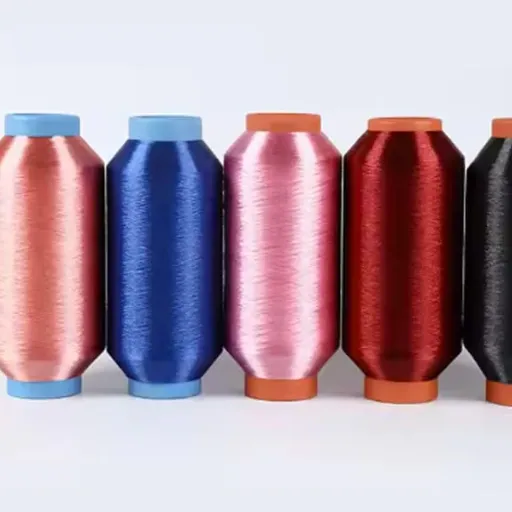
Tensile Strength and Elongation Properties
Industrial synthetic monofilaments exhibit an unusual capability of sustaining tensile strength and elongation properties, due to which they are deployed in applications needing durability and an excellent range of flexibility. Tensile strength is defined as the maximum force imposed upon the filament while being pulled before its breaking. This capacity allows synthetic monofilaments to resist heavy loads without failure to meet the structural requirements posed by industries such as aerospace or construction.
The elongation characteristics, though, concern the measure of stretching that these materials can actually sustain before they fail. This is crucial in such situations where an elastic behavior is expected from these materials. Monofilaments of this type with greater elongation percentages can absorb more stress in tension, which will be beneficial in settings where there is a lot of movement involved. The mix of strength and flexibility gives the industries the ability to design solutions capable of offering both durability and flexibility in the field.
The tensile strength and elongation exhibited by synthetic monofilaments may vary with the synthetics used in them. Implanted materials such as nylon and polyester bring forth adequate combinations of tensile strength and elongation, thereby providing wide options for use in engineering fields. Considering this, through appropriate choice of composition and processing conditions, the properties of monofilaments can be modified to meet the requirements of a particular application while retaining high reliability and efficiency.
Durability and Resistance Features
Key Resistance Properties
- Weather Resistance: Withstands moisture, UV rays, and temperature changes
- Chemical Resistance: Maintains properties when exposed to oils, fuels, and chemicals
- Abrasion Resistance: Extended lifespan under constant mechanical stress
- Low Water Absorption: Minimal dimensional changes in high humidity environments
Monofilaments are generally renowned for their high strength and resistance properties, allowing for great flexibility of use in industrial-engineering applications. They resist weathering factors such as moisture, UV rays, and temperature changes, which ensure reliable performance over a long duration. These are the same features offered by synthetic materials such as nylon and polyester, giving inherent strength and structural stability.
Chemical resistant ability is yet another feature of monofilaments. Many monofilaments do not lose their mechanical properties when exposed to oils, fuels, and chemicals; thus, they are considered fit for use in industrial environments where contact with such substances is a normal affair. With low water absorption rates coupled with anti-corrosive ability, the quality of a certain monofilament will be hardly affected in marine environments or settings with very high humidity.
With abrasion resistance granted to monofilaments, they can extend their lifespan even when subjected to constant mechanical stresses or friction. This ability holds especially true for fishing lines, textiles, and conveyor belts, where such wear and tear form the order of the day. However, resistance and durability can be improved tremendously by selecting specific materials and configurations, depending on the specifications so that maximized monofilament applicability and performance can be achieved.
Environmental Impact and Sustainability
The production and disposal methods involved greatly charge the environmental impact of monofilament materials. At its simplest, monofilaments are made of synthetic polymers that are not biodegradable and may last in ecosystems for decades. Discarding wastes illegally-as when they are thrown-on land or dumped in the sea-hitherto causes damage to wildlife and ecosystems as animals get entangled in the remnants or even ingest them.
🌱 Sustainability Solutions
- Development of biodegradable alternatives
- Use of recycled materials in production
- Energy-efficient manufacturing processes
- Proper recycling programs for end-of-life products
- Consumer education on responsible use and disposal
Sustainable methods try to reduce the environmental impact of monofilaments. Research has proposed some alternatives that are biodegradable, as well as recycled materials for use in production. These are ways for waste minimization and to lessen the raw, non-renewable resources. Green innovations address energy consumption and emissions in plant operations and manufacturing, contributing to a lesser carbon footprint.
In giving a possibility for sustainability in the future, proper recycling of monofilament products should be promoted together with the research and development of more greener materials. An educated consumer class and industries on responsible use and disposal will go a long way to resolving the environmental risk. Environmentally, the problems caused by monofilaments continue as does the search to put production processes in line with sustainability.
Choosing the Right Filament Supplier
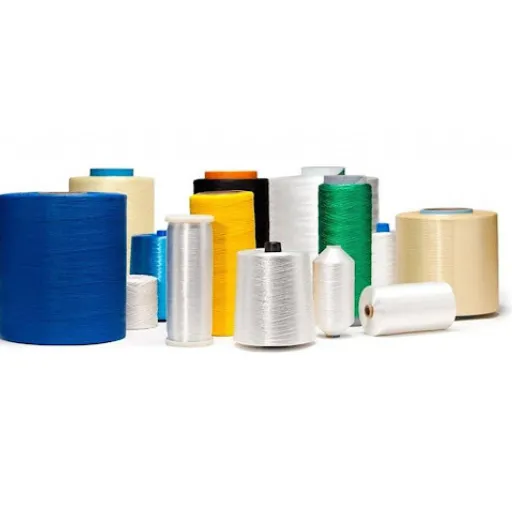
Criteria for Selecting Monofilament Suppliers
Product Quality
Industry standards compliance, certifications, and consistent performance
Sustainability
Eco-friendly production processes and recyclable materials
Reliability
On-time delivery, technical support, and communication
Quality of products is the primary consideration when evaluating companies selling monofilaments. Good-quality monofilaments do meet the industry standards and the requirements specified for the application, which would ultimately guarantee their durability, uniformity, and performance. One could consider asking for samples or certifications such as ISO standards to confirm that the supplier complies with the indicated quality standards.
Sustainability should also be a consideration. There needs to be an assessment concerning any efforts undertaken by the supplier to ensure better sustainability in their production processes and recycling activities, as well as in the development of materials that are biodegradable or greener. A supplier will definitely have the concept of sustainability ingrained in its operations if it shows responsible behavior toward global challenges, which is becoming more and more relevant for corporations with ecological concerns.
Frequently one must also be concerned with rag reliability and support infrastructure. They cover aspects such as the supplier’s ability to deliver on time, technical support, and reliability in communication. An honest supplier can enable you to have uninterrupted productive operations through mutual cooperation. Investigate reviews or ask around for references upfront to make a fair evaluation of reputation and reliability.
Evaluating Supplier Capabilities
Essential Evaluation Areas
Production Capacity & Quality
Verify ability to deliver required quantities on time and compliance with quality standards through sample testing.
Technical Expertise
Assess machinery, process developments, and ability to work with industry-specific specifications.
Communication & Service
Transparent pricing, clear payment terms, and efficient complaint resolution processes.
Evaluation of suppliers for synthetic monofilament yarn must also address the evaluation of their plant capacity, production consistency, and quality considerations. Verify if the supplier can deliver the quantity required within the stipulated timeframe and if the production processes in place conform to recognized quality standards. Also, request for sample yarns to be tested for durability, stretchability, and uniformity. These tests are very crucial in determining the suitability of the product for your applications.
Next, look at the technical expertise involved. Such technical expertise encompasses such factors as machinery used, process developments, and production methodologies. Generally, suppliers with the good level of technological infrastructure tend to produce higher-quality products. Verify further whether the supplier has already worked with yarns that fit the specifications required for your industry and whether he could bring in technical innovations that may improve efficiency or performance.
Along with this, communication will be the next people factor for emphasis. Putting this type of coordination together will smooth working relations and in resolving issues quickly, supporting the life of the partnership. Transparent pricing, clear payment terms, and an uncomplicated process for registering and resolving complaints or returns should all be guaranteed by a receiver. Such a trustworthy receiver should embody and strive for customer satisfaction as well as impeccable service throughout the whole of their establishment.
Case Studies of Successful Supplier Partnerships
1 Collaborative Supply Chain Streamlining
An advanced synthetic monofilament yarn manufacturer teamed up with its principal supplier in just-in-time delivery. While inventory costs were greatly reduced, suppliers were also assured an undisturbed flow of raw materials into his factories. With the regular sharing of forecasts and production schedules, each party was responsive to changes in demand. This partnership not only enhanced operational efficiency but also increased the trust and transparency among the manufacturer and supplier.
2 Innovating Through Joint Development
An institution that produces textiles entered into collaboration with a supplier of synthetic yarn to develop jointly a new type of high-durability monofilament. Through dialogue and sharing of resources, the supplier contributed material science know-how, while the producer imparted insights into customer needs. They ended up creating a product that was very fast to be adopted by the market and hence created profit for both companies. This case demonstrates the benefits of fostering innovation through supplier partnerships.
3 Working on Supply Chain Challenges
Amid global supply chain disruption, a manufacturer of synthetic monofilament yarn worked with the supplier in finding alternative shipping routes and optimizing logistics. Such an arrangement kept the disruption barely affecting the production timelines and cemented the trust between the two parties. The ability to confront challenges together demonstrates the very importance of communication and problem-solving when forging relations with suppliers.
Frequently Asked Questions (FAQ)
Common Questions About Synthetic Monofilament Yarn
Q: What are synthetic monofilament yarns?
A: Synthetic monofilament yarns are made from a single, continuous strand of synthetic fiber such as polyester or nylon. It is a very strong yarn and is therefore used for a variety of purposes, including textile and industrial applications.
Q: What are some benefits of using polyester monofilament yarn?
A: Some important benefits of polyester monofilament yarn include excellent abrasion resistance, chemical resistance, and considerable tensile strength, in addition to maintaining a light weight and good flexibility category, which makes it suitable for textile uses.
Q: What is the difference between nylon and polyester monofilament yarns?
A: Nylon monofilament yarn, on the other hand, is made up of nylon fibers such as nylon 6 or nylon 66 and is more elastic and stronger than polyester monofilament yarn; however, polyester yarn does provide better UV resistance and absorbs less moisture.
Q: What kind of uses does synthetic monofilament yarn have?
A: Synthetic monofilament yarn sees wide use in industrial fishing line making and production of sewing threads and other textile goods. It is a good yarn for automotive, outdoor gear, and industrial textile applications because of its durability and tensile strength.
Q: What are the distinguishing features between monofilament and multifilament yarns?
A: Monofilament yarn is a single, continuous strand, whereas multifilament yarn consists of numerous strands twisted together. The monofilament yarn has more tensile strength and stiffness while the multifilament yarn is flexible and soft.
Q: How is synthetic monofilament yarn produced?
A: Synthetic monofilament yarn is prepared by a process called extrusion, wherein molten synthetic fibers, either polyester or polypropylene, are extruded from a spinneret to form continuous filaments which are later cooled and wound onto spools.
Q: What are the key factors that I should look for when selecting good quality synthetic monofilament yarn?
A: When selecting good quality synthetic monofilament yarns, some criteria should be considered, including the denier, tensile strength, wear resistance, and the kind of synthetic fiber from which it is made. Usually, the best are polyester and nylon monofilament yarns for their long service life and good performance.
Q: Are there environmentally friendly alternatives available for synthetic monofilament yarn?
A: Yes, recycled polyester monofilament yarn is an environmentally friendly alternative. It is made from post-consumer plastic bottles and other waste material, which aids in the reduction of waste and upholds sustainability in the textile industry.
Q: Can synthetic monofilament yarn be applied in outdoors?
A: Yes, synthetic monofilament yarn is widely used in outdoor applications because of its excellent weather resistance and durability to instances of-varying environmental conditions, good enough for the likes of outdoor furniture and fishing gear.
References
-
Monofilament Yarns, Synthetic PET/Polypropylene Mono – Yushengmax – Overview of synthetic monofilament yarns, including their applications like fishing lines and 3D printing filaments.
-
The Complete Guide to Monofilament Yarns – Textile Yarn – Insights into the structure and manufacturing of monofilament yarns made from synthetic polymer fibers.
-
Monofilament Yarn Suppliers, Manufacturers – NTEC – Information on premium-grade synthetic monofilament yarns made from high-tenacity polyester.
-
What Is Monofilament Yarn? What Is The Application Of – NTEC – Details on the uses of monofilament yarn in warp knitting, weaving, and upholstery.
-
Discover the Versatility of Monofilament Yarn – Textile Yarn – Applications of monofilament yarn in fishing lines, ropes, netting, and agricultural uses like greenhouse shading nets.











